Nature is a realm of limitless possibilities, where extraordinary creatures defy expectations and shatter records. From the deepest oceans to the highest skies, these champions of survival, strength, speed, and endurance inspire wonder at every turn. Some push the limits of physical power, while others wield unique adaptations that seem almost magical. Each of these 50 incredible animals tells a story of resilience and brilliance, proving that evolution’s creativity knows no bounds. Let’s explore these astonishing creatures and the incredible feats that make them true legends of the natural world.
1. Peregrine Falcon: The Speed King
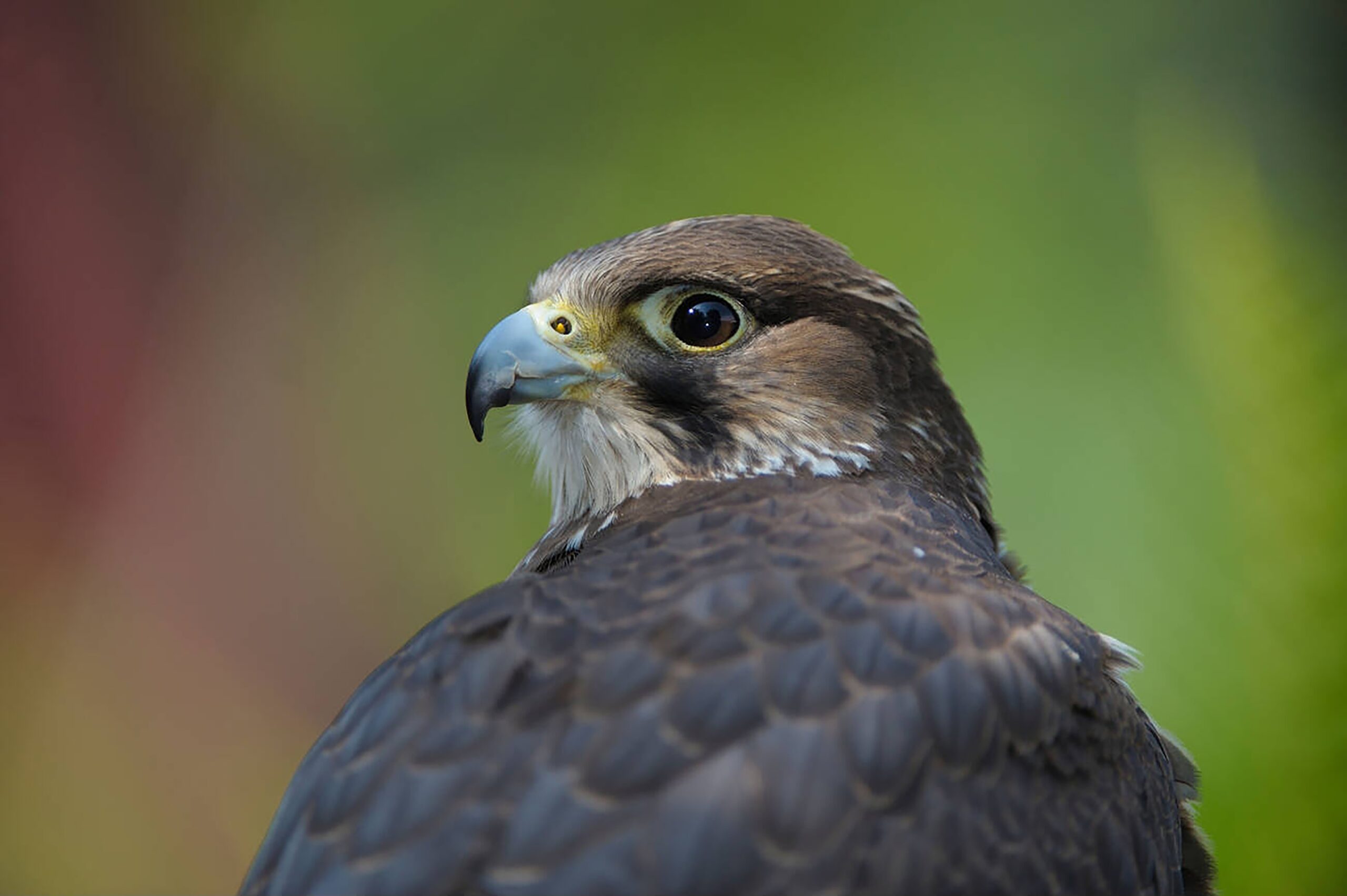
Shutterstock
When the peregrine falcon dives, the sky bows to its supremacy. At a jaw-dropping 240 mph, this avian missile is the fastest animal on Earth. Its wings slice through the air like razors, propelling it toward prey with unrelenting precision. Eyes eight times sharper than a human’s lock onto the target, ensuring no escape. Each dive is a masterclass in power, speed, and grace—a spectacle that leaves everything else grounded. The peregrine doesn’t just rule the skies; it owns them.
2. Blue Whale – The Ocean’s Colossus

A titan among titans, the blue whale dwarfs every other creature in existence. Stretching over 100 feet and weighing as much as 200 tons, it’s a living leviathan of the seas. Its heart beats with the power of a drum, pumping life through veins as wide as human torsos. Even its calls, deep and haunting, echo for miles like the voice of the ocean itself. A testament to nature’s boundless creativity, the blue whale is not just massive—it’s magnificent.
3. Cheetah: The Sprinting Champion

The cheetah is evolution’s finest sprinter, exploding into motion with breathtaking force. In just three seconds, it accelerates to 70 mph, leaving even the fastest cars in the dust. Its long, muscular legs and flexible spine work in perfect harmony, creating a blur of speed and agility. Each stride covers up to 25 feet, a stunning display of precision and power. The cheetah isn’t just a runner; it’s a force of nature—a living embodiment of raw, unstoppable momentum.
4. Giraffe: The Towering Wonder

Grace and strength reach their pinnacle in the giraffe, Earth’s tallest creature. Towering over 18 feet, it uses its lofty vantage to spot predators long before they strike. But this gentle giant isn’t defenseless—its powerful legs can deliver bone-shattering kicks that even lions fear. Its neck, an evolutionary marvel, allows it to graze treetops untouched by other herbivores. Majestic yet mighty, the giraffe is nature’s skyscraper, a blend of elegance and unyielding power.
5. Arctic Tern: The Ultimate Traveler
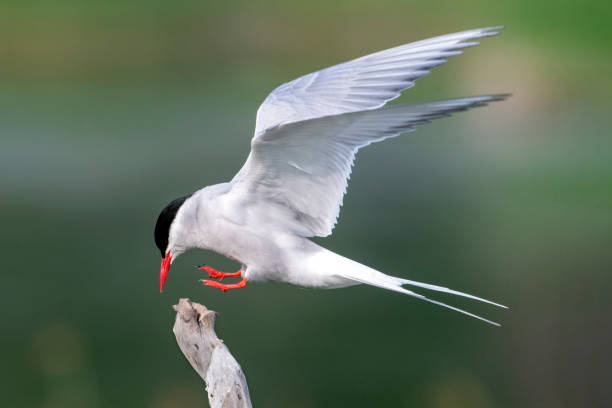
The Arctic tern’s journey is nothing short of legendary. Each year, it embarks on a 44,000-mile migration, traveling from the Arctic to the Antarctic and back again. This tiny bird defies storms, predators, and exhaustion, chasing endless daylight with unrelenting stamina. Its sleek wings carry it across oceans and continents, a true marathoner of the skies. The Arctic tern is a symbol of resilience, determination, and the spirit of adventure—nature’s ultimate long-distance champion.
6. Hercules Beetle: Nature’s Strongman
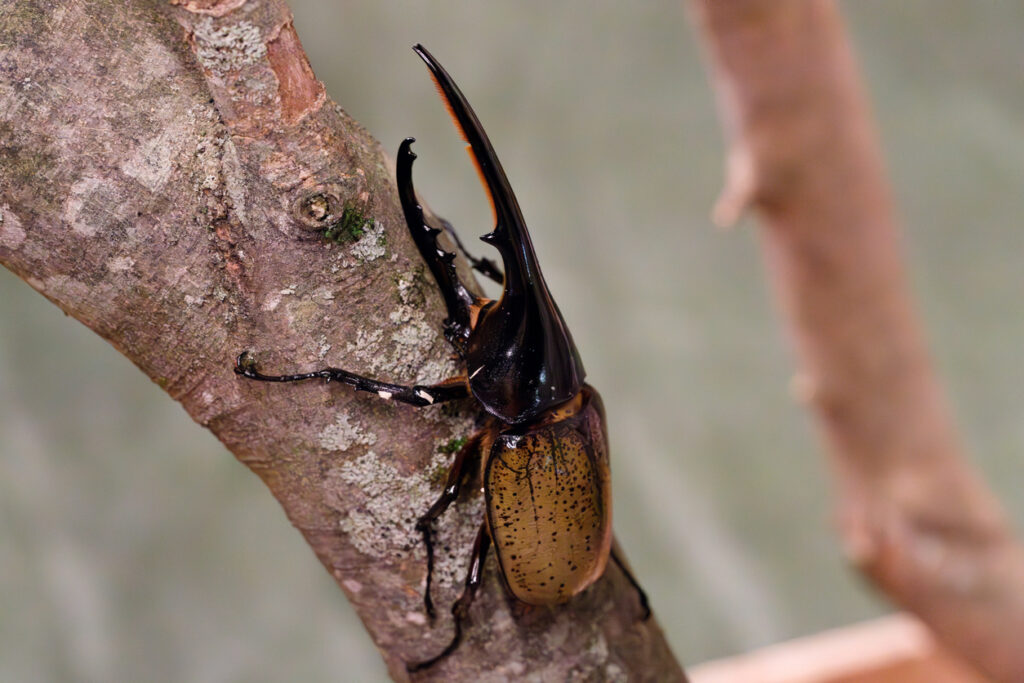
iStock
The Hercules beetle is strength personified. This insect can lift 850 times its body weight—the equivalent of a human hoisting 65 tons. Its iconic horn, sharp and unyielding, is used to wrestle rivals in dramatic showdowns. Found in the rainforests of Central and South America, it moves with the quiet confidence of a heavyweight champion. Beneath its armor lies the raw, unrelenting power that makes the Hercules beetle a true titan of the insect world.
7. Greenland Shark: The Ancient Survivor
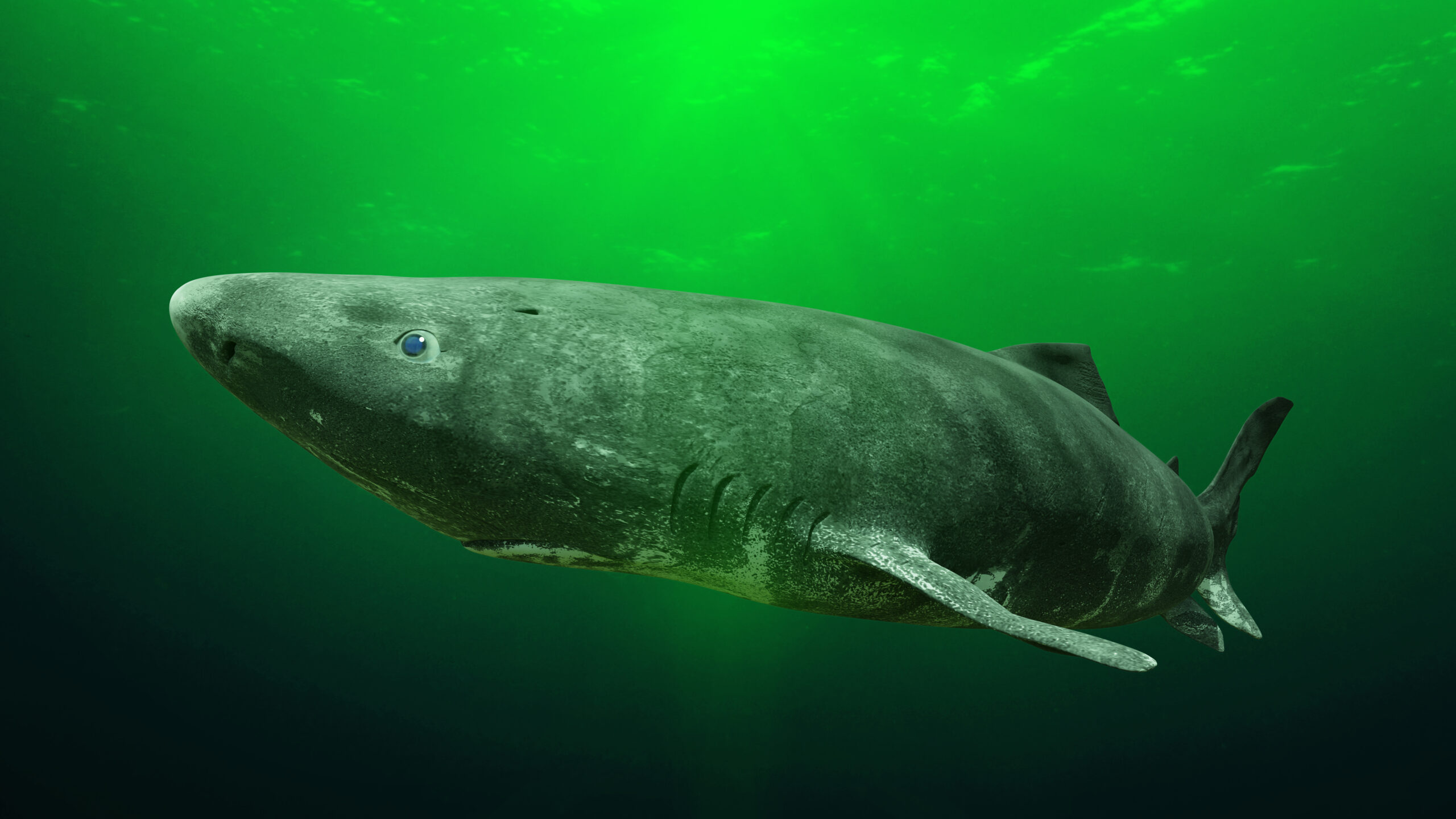
Shutterstock
The Greenland shark is a living relic, gliding through the icy North Atlantic for over 500 years. With a slow, ghostly grace, it outlives centuries, watching empires rise and fall. Its secret lies in its frigid habitat, where time slows to a crawl, granting it near-immortality. This predator moves silently through the depths, its ancient eyes bearing witness to secrets lost to history. A true marvel of resilience, the Greenland shark is both a survivor and a time traveler.
8. Harpy Eagle: The Rainforest Ruler
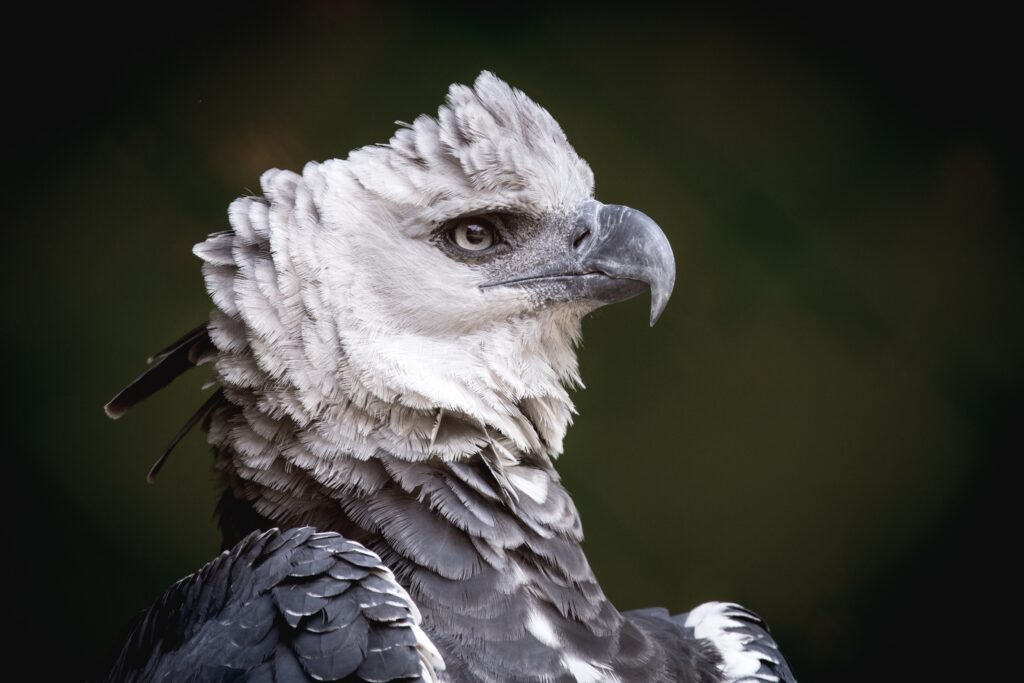
With talons as large as grizzly bear claws, the Harpy eagle rules the rainforest canopy with unchallenged authority. It swoops through the jungle in silence, snatching sloths and monkeys with devastating force. Its piercing eyes and striking crown of feathers make it look every bit the monarch it is. This apex predator commands respect, blending brute strength with regal elegance. The harpy eagle isn’t just a hunter; it’s a ruler, dominating its domain with unparalleled power.
9. Giant Anteater: The Bug Vacuum
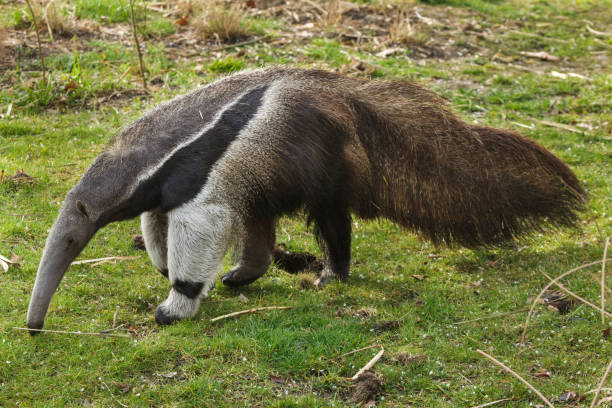
The Giant Anteater’s two-foot-long tongue is its ultimate weapon, helping it devour up to 30,000 ants and termites daily. Found in South America, this shaggy-coated insectivore uses sharp claws to tear into mounds before feasting on its prey. Its specialized diet plays a crucial role in maintaining ecosystem balance. With its unique appearance and record-breaking appetite, the giant anteater is a true marvel of evolution. It may be unusual, but it’s undeniably extraordinary.
10. Tardigrade: The Indestructible Microwarrior
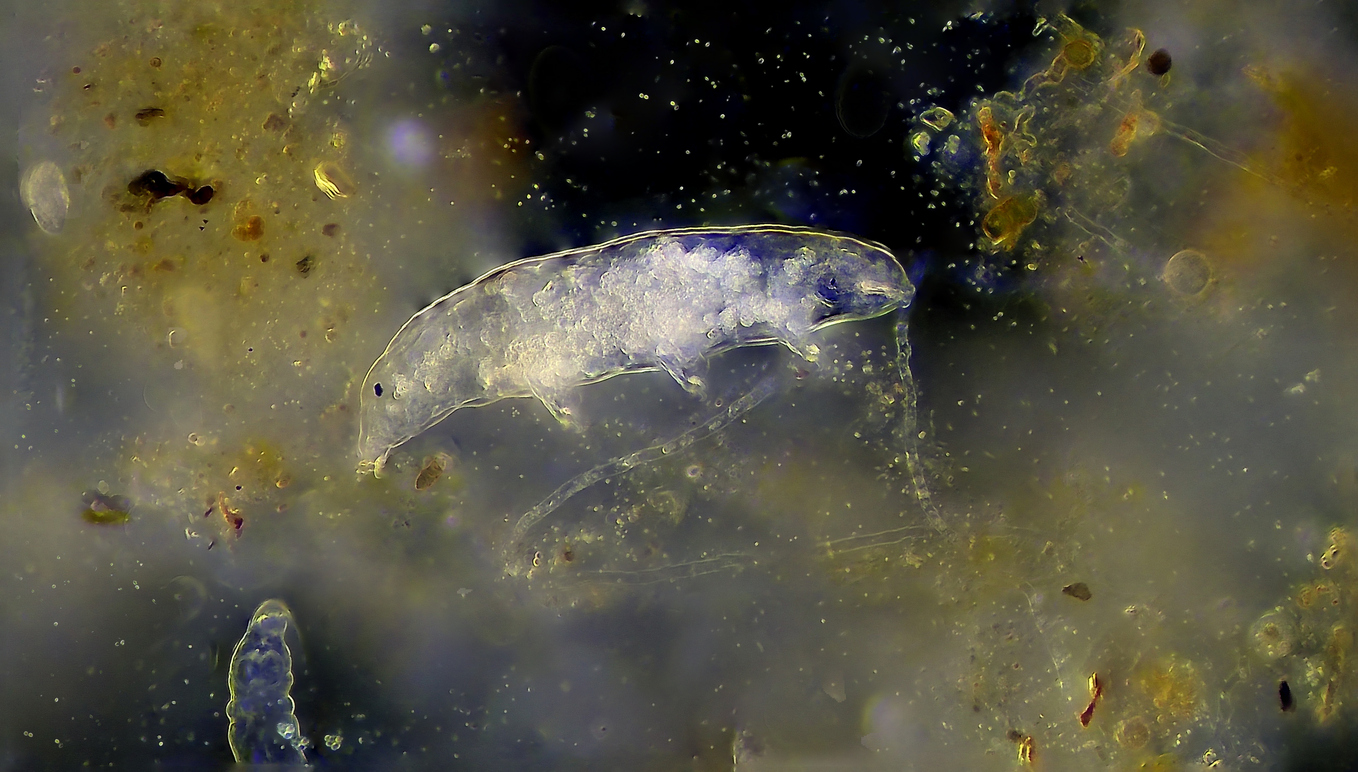
The Tardigrade, or water bear, is nature’s toughest survivor. These microscopic creatures can endure extreme heat, cold, radiation, and even the vacuum of space. When conditions become unbearable, they enter a state of suspended animation, reviving when the environment improves. Found in nearly every habitat, tardigrades are practically indestructible, outlasting even the harshest conditions. Despite their tiny size, they are a testament to life’s resilience. The tardigrade doesn’t just survive—it thrives where nothing else can.
11. Sloth: The Slow-Motion Champion

Shutterstock
At just 0.15 mph, the Sloth takes life in the slow lane. This treetop dweller spends most of its time hanging upside down, moving so slowly that algae grow on its fur, providing natural camouflage. Its unhurried lifestyle conserves energy and keeps it hidden from predators. Found in Central and South America, the sloth’s unique physiology, including specialized muscles and a low metabolic rate, helps it thrive where others might fail. It may be slow, but the sloth’s survival strategy is brilliantly efficient.
12. Komodo Dragon: The Lizard King
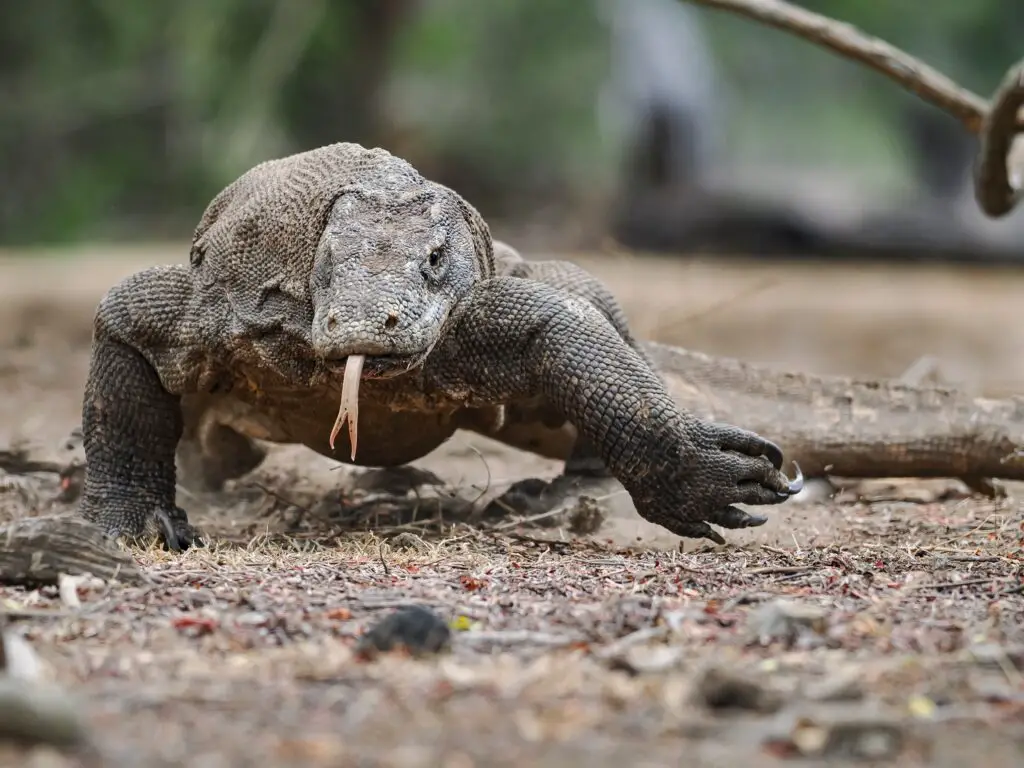
Shutterstock
The Komodo dragon is evolution’s ultimate reptile, stretching over 10 feet long and tipping the scales at 300 pounds. Its serrated teeth and venomous saliva make every bite lethal, and its powerful tail doubles as a weapon. Found only on Indonesian islands, this apex predator rules its volcanic terrain with unmatched dominance. It doesn’t just hunt—it stalks and ambushes prey with terrifying efficiency. The Komodo dragon is more than a lizard; it’s a prehistoric powerhouse, a ruler born of fire and ferocity.
13. Monarch Butterfly: The Epic Migrant

Shutterstock
The monarch butterfly’s migration is one of nature’s greatest triumphs. Traveling up to 3,000 miles, it crosses mountains, rivers, and continents on delicate wings. Its striking orange-and-black pattern warns predators of its toxicity, adding beauty to its resilience. Guided by instincts as old as time, this fragile creature accomplishes what few animals dare: an epic journey against all odds. The monarch is a testament to the idea that even the smallest of beings can achieve greatness.
14. Emperor Penguin: The Deep Diver

Pexels
The emperor penguin thrives where no other bird dares: Antarctica’s unforgiving ice. It dives nearly 1,800 feet beneath the freezing ocean to hunt, enduring temperatures as low as -76°F. Huddling in tightly packed groups, these regal birds survive through teamwork, braving blizzards with unmatched determination. With their golden accents and stoic presence, emperor penguins are the ultimate symbols of resilience. They embody survival in its purest form—enduring, thriving, and ruling the most hostile environment on Earth.
15. Basilisk Lizard: The Water Walker

The basilisk lizard runs where others sink—across water. Known as the “Jesus Christ lizard,” it sprints on hind legs, using speed and wide toes to stay afloat. Found in Central and South America, it can cover 15 feet before gravity takes over, leaving predators baffled. This amphibious escape artist is evolution’s answer to miracles, combining agility and ingenuity. Watching a basilisk in action is like witnessing the impossible—a spectacle that turns survival into an art form.
16. African Elephant: The Gentle Giant
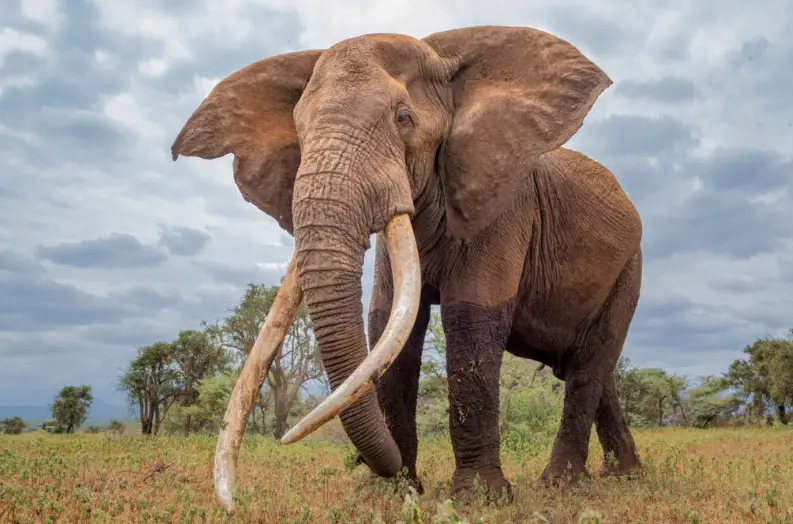
Weighing up to 14,000 pounds, the African elephant is the largest land animal on Earth. With powerful trunks that can lift 700 pounds and tusks capable of uprooting trees, these giants shape their ecosystems. Found in the savannas and forests of Africa, elephants are known for their intelligence and deep family bonds. Their size and strength make them awe-inspiring, but it’s their emotional depth and social connections that truly set them apart. The African elephant is a majestic blend of power and heart.
17. Bombardier Beetle: Nature’s Firecracker
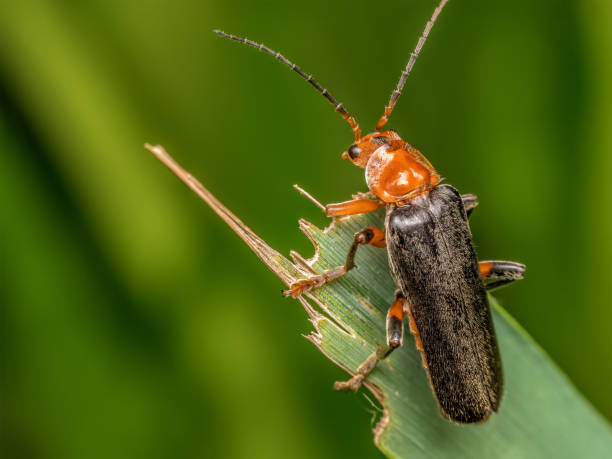
The Bombardier beetle defends itself with an explosive chemical spray that can reach up to 212°F. Found worldwide, this tiny insect is a walking chemistry lab, producing its fiery defense in milliseconds. The loud pop and steaming reaction scare off predators, making the beetle nearly untouchable. Its ability to create such a powerful weapon within its tiny body is a marvel of evolution. The bombardier beetle proves that even the smallest creatures can pack a massive punch.
18. Honey Badger: The Fearless Warrior

The Honey Badger has earned its reputation as one of the toughest animals on Earth. This scrappy carnivore will take on lions, cobras, and anything else that dares to challenge it. Armed with thick skin, sharp claws, and an unshakable attitude, it thrives in the savannas and deserts of Africa and Asia. Whether raiding bee hives for honey or fending off predators, the honey badger never backs down. Its fearless nature and unmatched resilience make it a true legend of the wild.
19. Electric Eel: The Shocking Predator
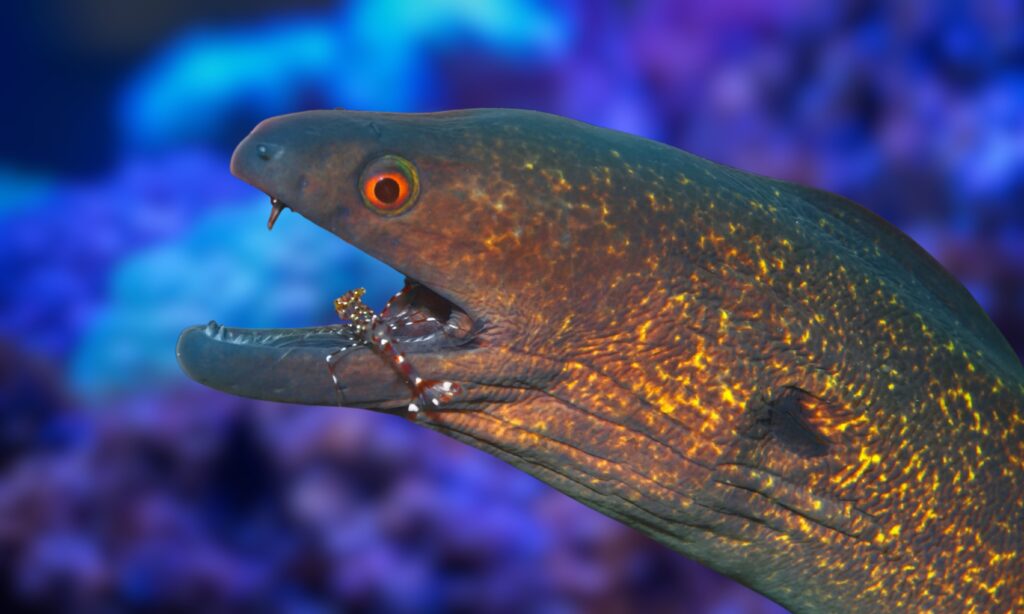
Shutterstock
The electric eel doesn’t need claws or teeth—it wields electricity. Delivering shocks of up to 860 volts, this aquatic predator disables prey and defends itself with raw energy. Its body acts as a living battery, creating power strong enough to stun large animals. Found in the murky rivers of the Amazon, it hunts with stealth and precision, combining electricity with strategy. The electric eel is a predator like no other, ruling its waters with a voltage no one dares challenge.
20. Flying Fish: The Ocean’s Glider
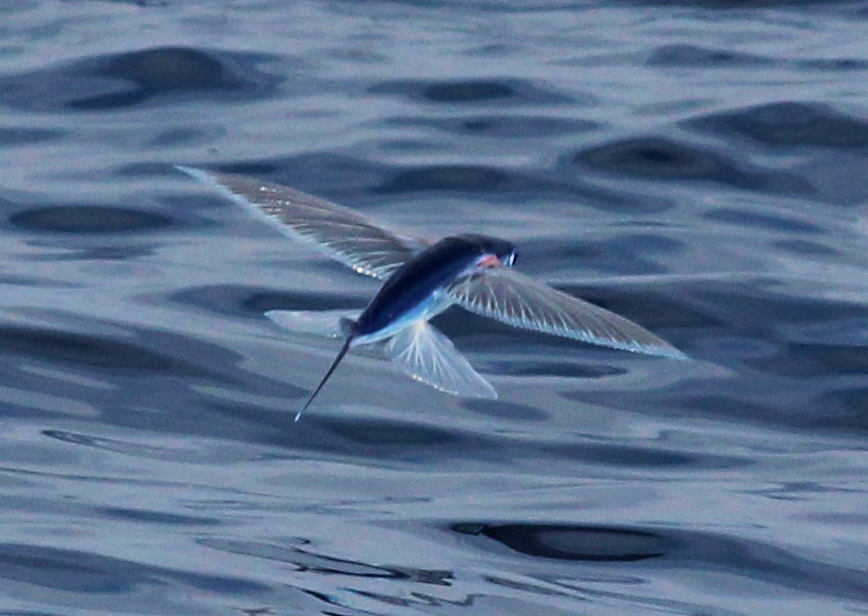
The flying fish is a master of escape, leaping from the sea and gliding over 650 feet through the air. Its wing-like fins catch the wind, allowing it to evade predators with a display that feels almost magical. Found in tropical waters, this airborne marvel straddles two worlds, thriving where sea meets sky. The flying fish isn’t just an escape artist—it’s a symbol of ingenuity and freedom, proving that survival sometimes means taking flight.
21. Velvet Worm: The Glue Gun Hunter

Shutterstock
The velvet worm is a predator armed with ingenuity. When it hunts, it sprays a sticky, glue-like substance to immobilize prey, turning the forest floor into its battlefield. Its soft, velvety body hides a ruthless efficiency, blending stealth and creativity. Found in tropical regions, this unique hunter uses its chemical weapon with surgical precision. The velvet worm is a quiet, unassuming champion—a reminder that evolution thrives on clever solutions.
22. Leatherback Turtle: The Deep Diver
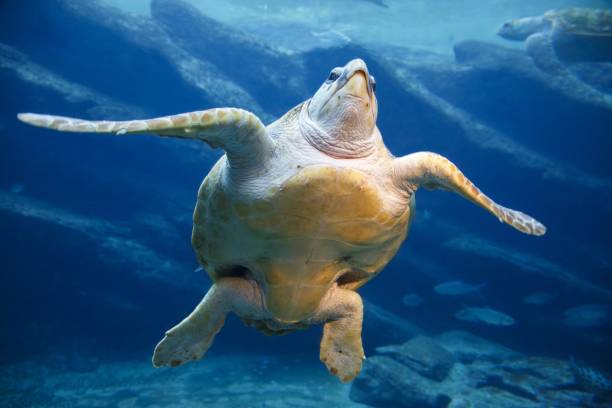
The Leatherback Turtle dives deeper than any other reptile, reaching depths of over 4,000 feet. Found in oceans around the world, this marine giant weighs up to 2,000 pounds and migrates thousands of miles between feeding and nesting grounds. Its flexible shell allows it to withstand immense underwater pressure, making it a true master of the deep. The leatherback’s ability to thrive in such extreme conditions cements its place as one of nature’s most remarkable sea creatures.
23. Cassowary: The Deadliest Bird
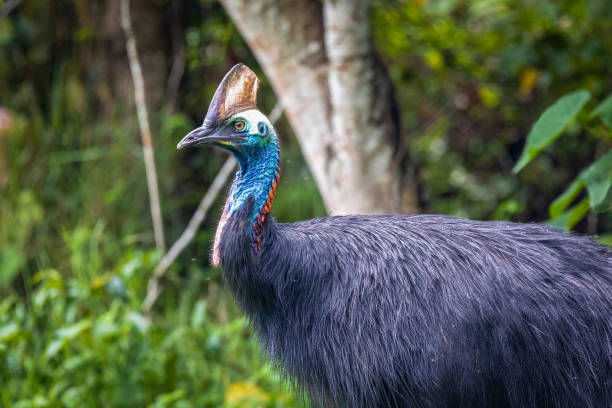
The Cassowary is a flightless bird with dagger-like claws that can deliver fatal kicks. Standing over six feet tall, this rainforest native of Australia and New Guinea is as deadly as it is striking. Its vivid blue skin and helmet-like crest give it an intimidating appearance. While shy by nature, a provoked cassowary is a force to be reckoned with. This unique combination of beauty and danger earns it the title of the world’s most dangerous bird.
24. Lyrebird: Nature’s Mimic King
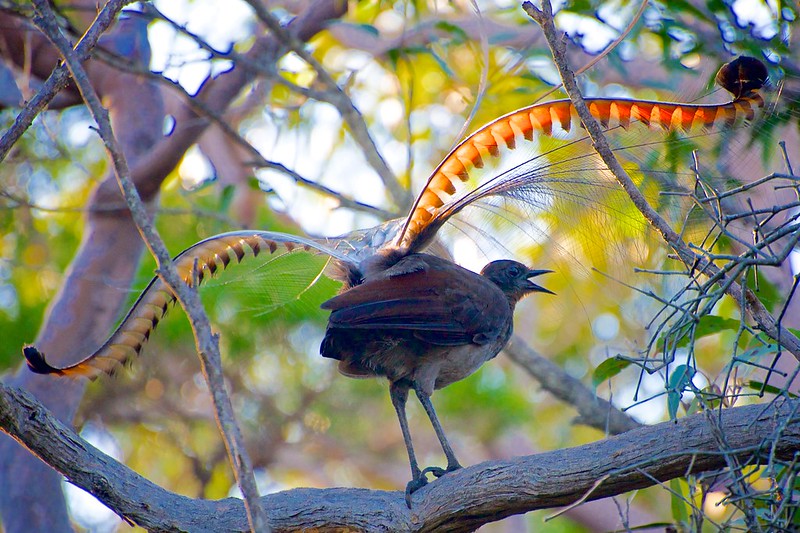
The Lyrebird is a virtuoso of mimicry, capable of imitating chainsaws, car alarms, camera shutters, and even human voices. Found in Australia’s forests, this bird pairs its stunning vocal abilities with a mesmerizing display of its lyre-shaped tail feathers. During mating season, it performs an unforgettable show, blending sounds and movements into a symphony of survival. The lyrebird’s talent is so extraordinary that it often seems too incredible to be real. It’s a testament to nature’s creativity and the power of adaptation.
25. Golden Eagle: The Power Flyer
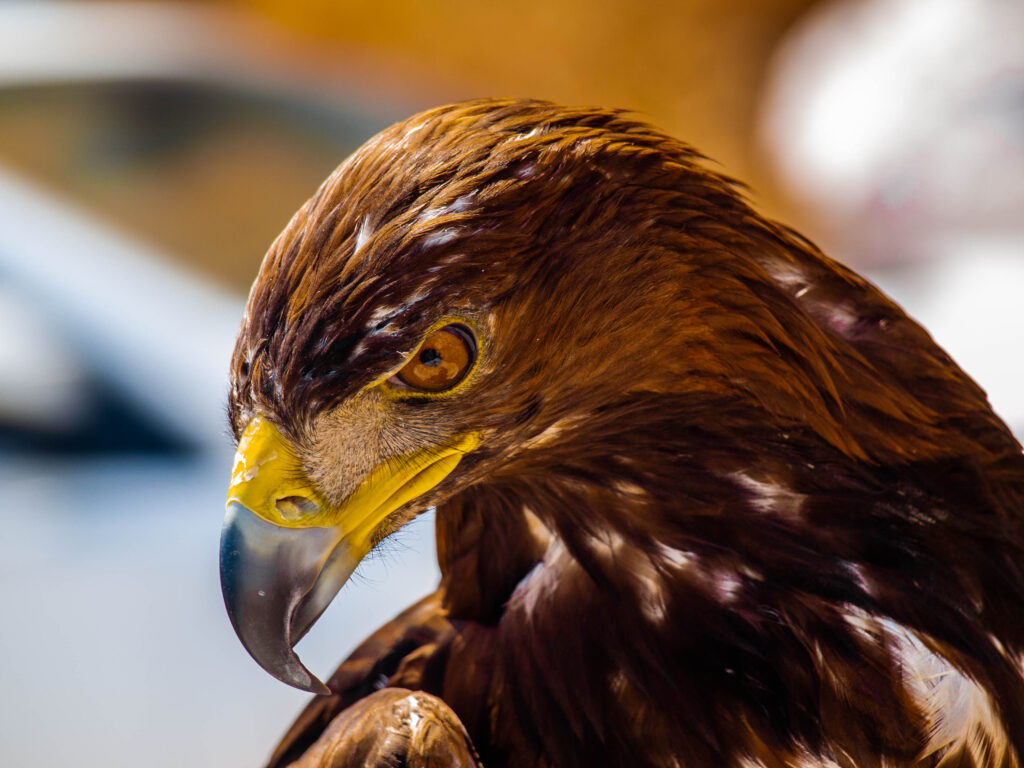
With piercing eyes and wings built for speed, the golden eagle dominates the skies. It dives at over 200 mph, striking prey with talons that lock like steel. Found in rugged mountain terrains, this apex predator combines elegance with unrelenting power. The golden eagle doesn’t just hunt—it soars above it all, a symbol of strength, freedom, and mastery over the wild.
26. Japanese Spider Crab: The Leggy Giant

YouTube
The Japanese spider crab holds the record for the longest legs of any arthropod, spanning up to 12 feet. Found in the deep waters of Japan, this enormous crustacean uses its lengthy limbs to scavenge for food along the ocean floor. Weighing up to 40 pounds, it’s both intimidating and fascinating. Despite its fearsome appearance, it’s surprisingly gentle. The spider crab’s alien-like design and massive reach make it a true wonder of the sea, blending mystery and grandeur.
27. Red Kangaroo: The Leaping Legend
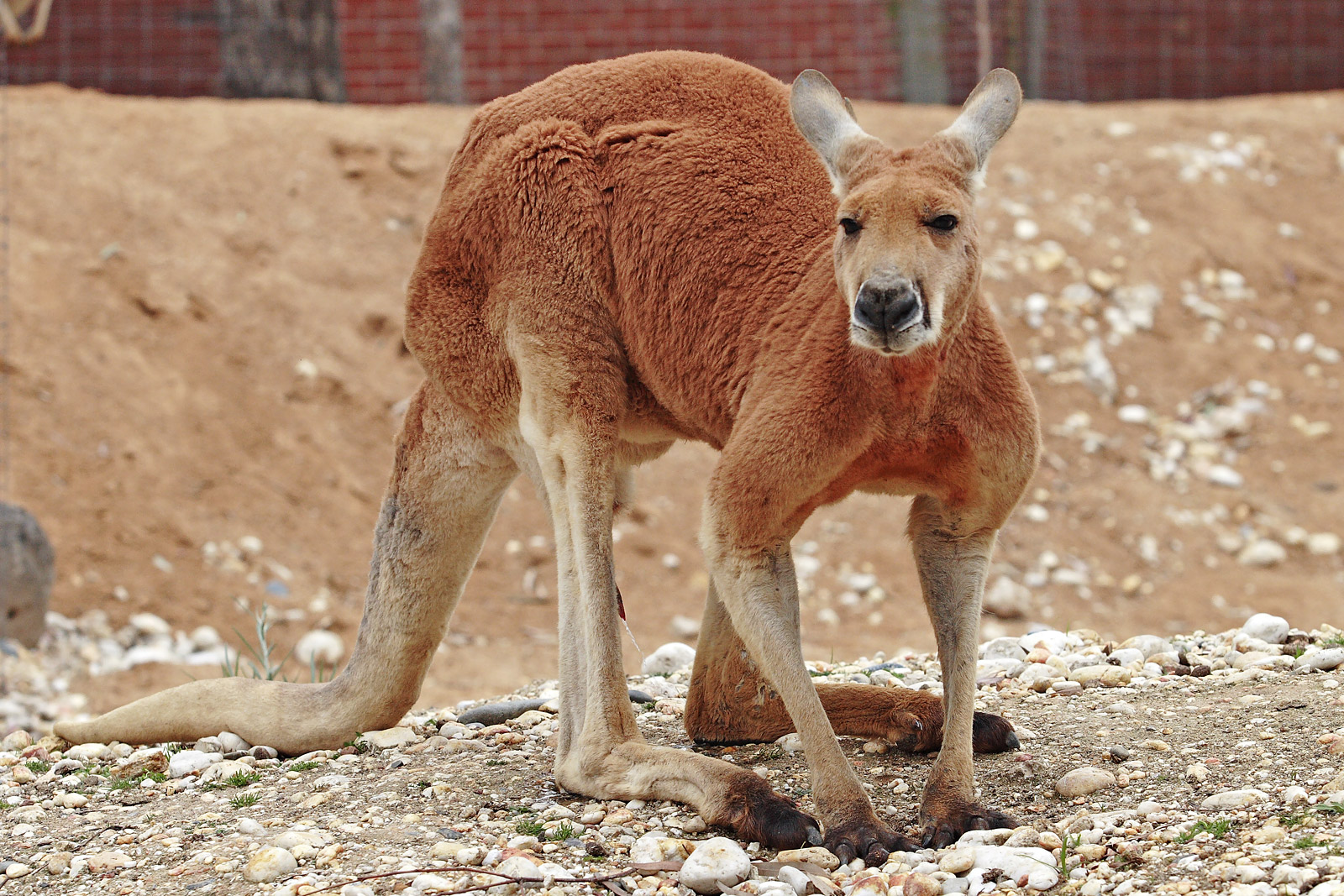
The red kangaroo is built for action, leaping up to 25 feet in a single bound and traveling at speeds of 35 mph. Found in Australia’s arid landscapes, this marsupial uses its powerful hind legs and muscular tail for balance and speed. Adapted to survive in harsh conditions, it can go for long periods without water. The red kangaroo isn’t just a national symbol of Australia—it’s a marvel of strength, efficiency, and grace, thriving in environments where survival is no easy feat.
28. Black Mamba: The Speedy Serpent

Shutterstock
The black mamba is the fastest snake in the world, slithering at speeds of up to 12 mph. Its sleek, dark body and highly toxic venom make it one of Africa’s most feared predators. Capable of delivering multiple strikes in seconds, it combines speed and precision to hunt and defend itself. Found in savannas and rocky regions, the black mamba is not just deadly—it’s elegant, embodying both danger and grace. Its reputation as a legend of the wild is well-deserved.
29. Flamingo: The Elegant One-Legged Icon
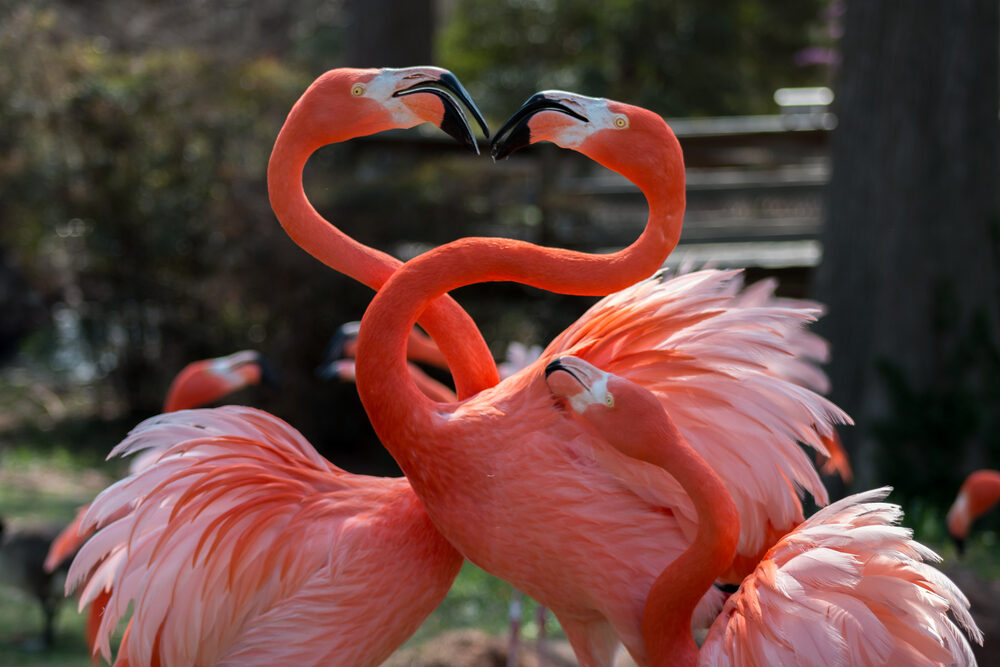
Flamingos are nature’s runway models, with vivid pink feathers and a unique habit of standing on one leg. Their bright coloration comes from their shrimp-heavy diet, while their posture helps conserve body heat. Found in wetlands worldwide, flamingos are social birds that gather in massive flocks, creating breathtaking spectacles. Their beauty isn’t just for show—it plays a role in attracting mates and asserting dominance. The flamingo’s mix of elegance, balance, and vibrant charm makes it one of the animal kingdom’s most iconic creatures.
30. Frigatebird: The Sky Pirate
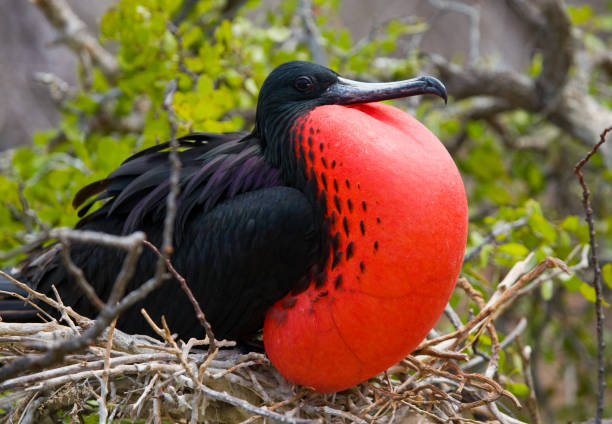
The frigatebird is a daring thief of the skies, stealing food mid-air from other birds with unmatched agility. Found in tropical oceans, this seabird can soar for weeks without landing, using air currents to glide effortlessly. Its dramatic red throat pouch inflates during mating displays, making it one of the most striking sights in the wild. The frigatebird’s combination of stamina, boldness, and agility makes it one of nature’s most fascinating aerial performers, proving that stealing can sometimes be an art.
31. Lion’s Mane Jellyfish: The Tentacle Titan
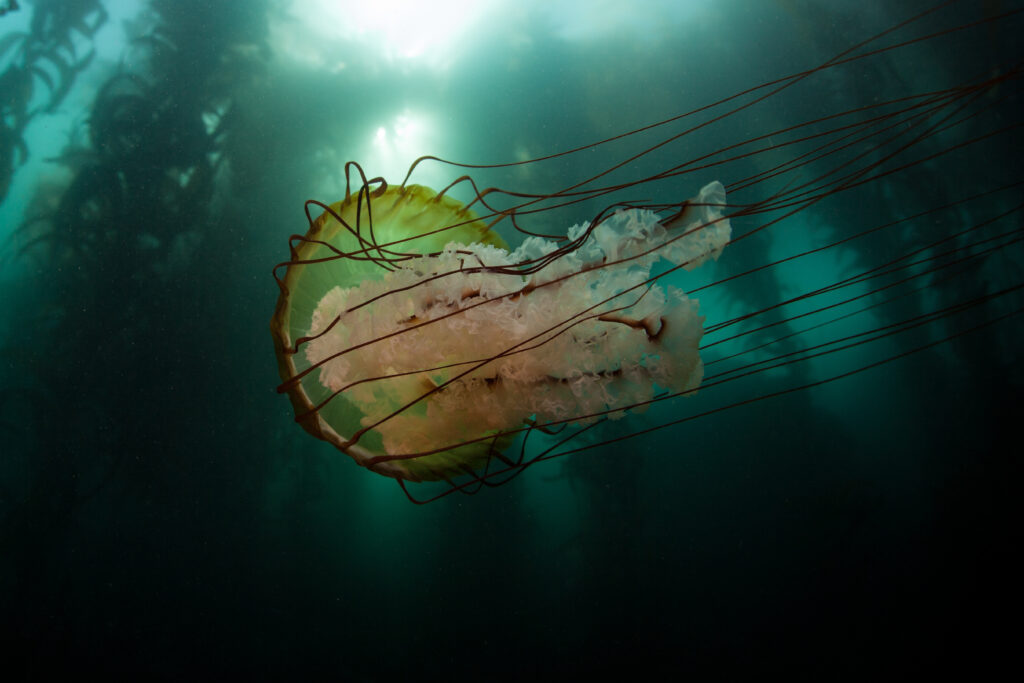
Shutterstock
The lion’s mane jellyfish is an underwater giant, with tentacles that can stretch up to 120 feet—longer than a blue whale. Found in the chilly waters of the North Atlantic, this jellyfish uses its trailing arms to ensnare prey in a floating web. Its translucent body and fiery orange bell create a hauntingly beautiful presence in the ocean. Despite its ghostly appearance, its stinging tentacles make it a formidable predator. The lion’s mane jellyfish is both a wonder and a warning of the mysteries beneath the waves.
32. Star-Nosed Mole: The Super-Sniffer
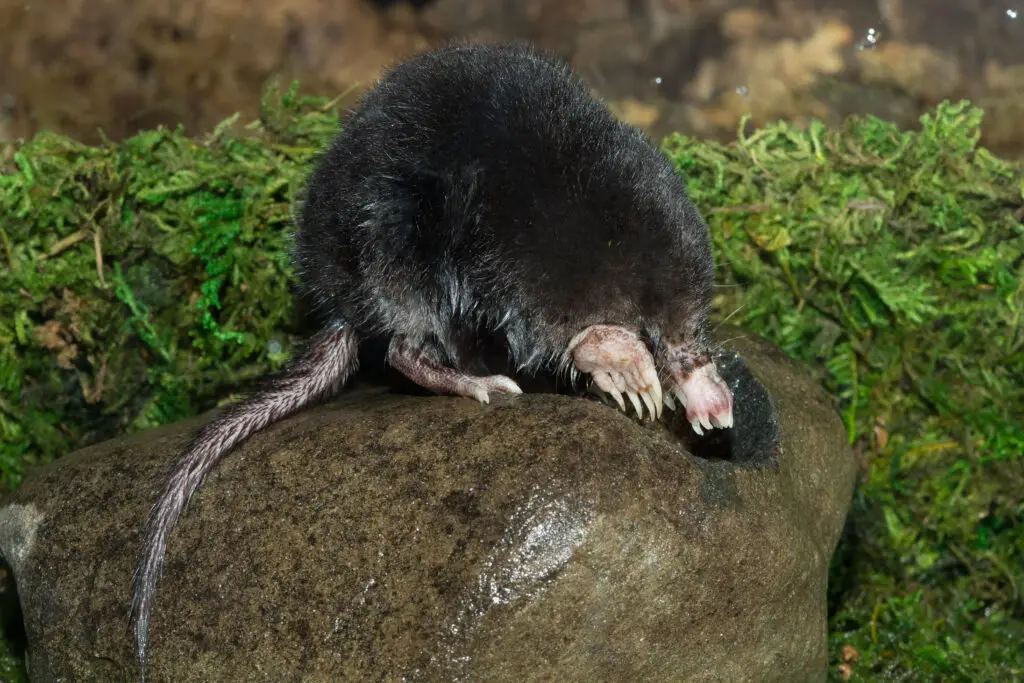
Shutterstock
The star-nosed mole is a bizarre but brilliant burrower, with 22 fleshy tentacles on its nose that detect prey in just 120 milliseconds. Found in wet, muddy habitats of North America, this mole’s unique snout acts as a hyper-sensitive sensory organ. It’s one of the fastest eaters in the animal kingdom, devouring small invertebrates almost instantly. Its ability to thrive underground with such specialized tools makes it one of nature’s most fascinating creatures. The star-nosed mole proves that even the strangest designs have a purpose.
33. Tarantula Hawk: The Painful Predator
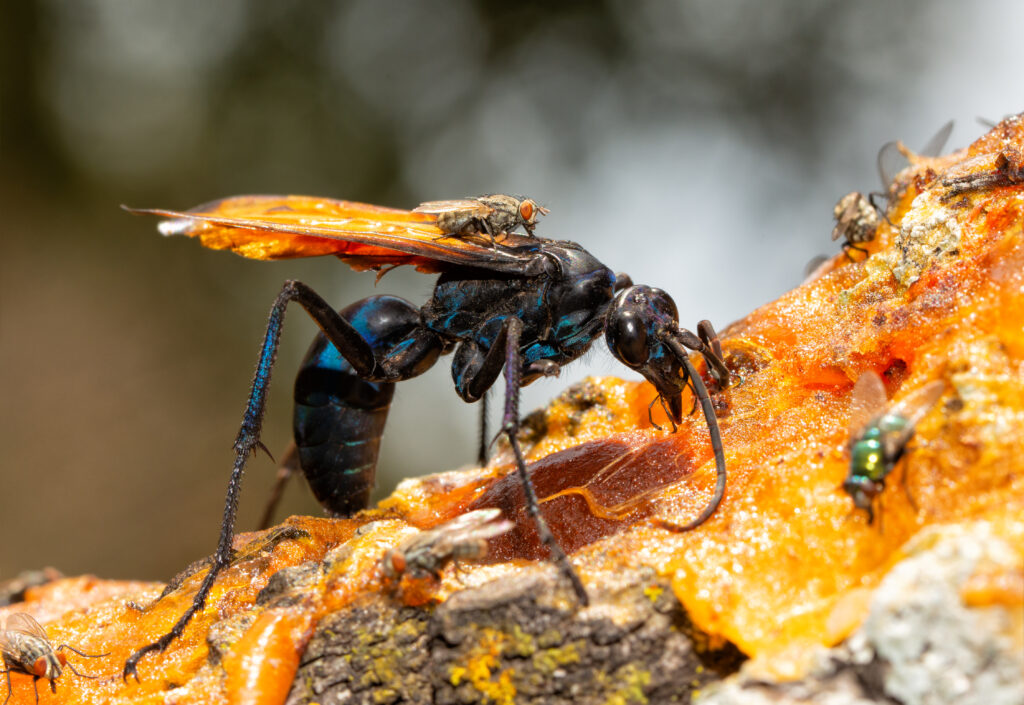
Shutterstock
The tarantula hawk isn’t just a wasp—it’s a nightmare for spiders. With one of the most excruciating stings in the world, it paralyzes tarantulas before laying its eggs inside them. Found in deserts, this striking insect boasts metallic blue bodies and fiery orange wings that make it as beautiful as it is brutal. Its hunting strategy is both horrifying and fascinating, cementing its place as one of nature’s most dramatic predators. The tarantula hawk proves that survival can be an art form.
34. Goliath Frog: The Amphibian Heavyweight

Shutterstock
The Goliath frog is the largest frog on Earth, weighing over seven pounds and reaching up to 12 inches in length. Found in the rainforests of Central Africa, this amphibian uses its massive strength to move rocks and build nests for its eggs. Despite its size, the Goliath frog is surprisingly agile, leaping impressive distances to avoid predators. Its sheer scale and unique behavior make it one of nature’s most extraordinary amphibians, blending power and adaptability in a way that’s truly awe-inspiring.
35. Mantis Shrimp: The Ocean’s Boxer
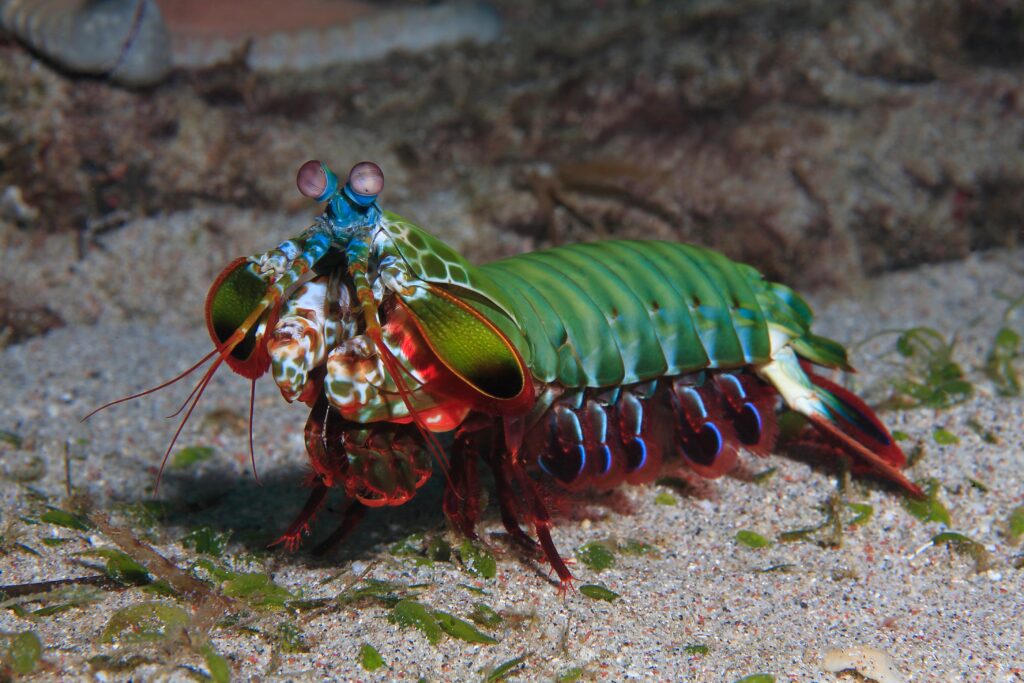
Shutterstock
The mantis shrimp’s punch is so fast and powerful it can break glass and crack shells. Found in tropical and subtropical waters, this crustacean’s club-like appendages strike with the force of a bullet, delivering blows at 50 mph. Its incredible eyesight, which detects more colors than the human eye, helps it hunt with precision. Vibrantly colored and explosively powerful, the mantis shrimp is both beautiful and dangerous. It’s a reminder that even the smallest creatures can have world-shaking abilities.
36. Marine Iguana: The Ocean’s Reptile
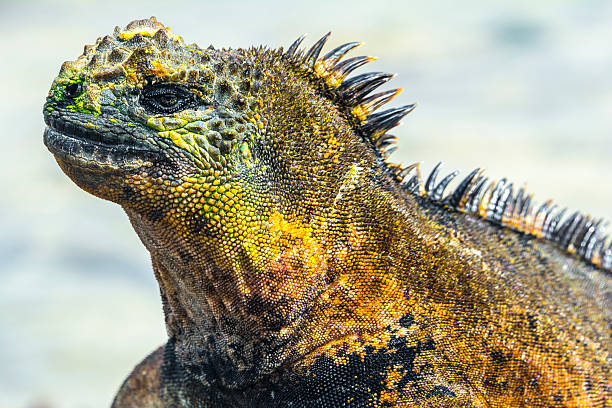
The Marine iguana is the only lizard on Earth that thrives in the ocean. Found in the Galápagos Islands, it dives up to 30 feet to graze on algae, its primary food source. With its flattened tail and sharp claws, it’s perfectly adapted for underwater life. Its ability to excrete excess salt through specialized glands adds to its evolutionary marvel. The marine iguana’s unique lifestyle, blending land and sea, makes it one of nature’s most extraordinary creatures, thriving where few others dare.
37. Arctic Fox: The Ice Survivor
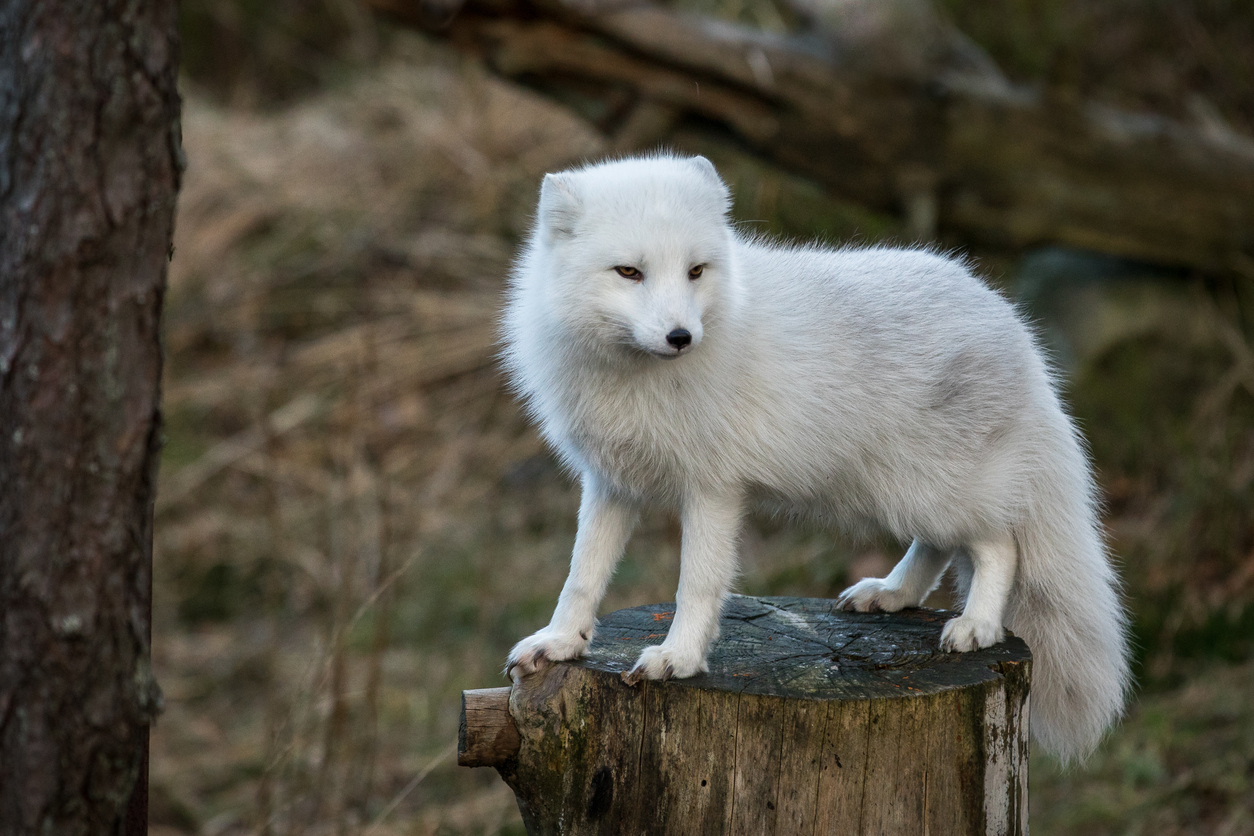
The Arctic fox thrives in one of the harshest environments on Earth, enduring temperatures as low as -58°F. Its thick, white winter coat provides both insulation and camouflage, blending seamlessly into the icy tundra. Found across the Arctic, it’s a skilled hunter, detecting prey beneath the snow with its keen hearing and pouncing with precision. The Arctic fox’s ability to adapt to such extreme conditions is a testament to nature’s ingenuity. It’s the ultimate survivor of the frozen wilderness.
38. Hummingbird: The Hovering Miracle
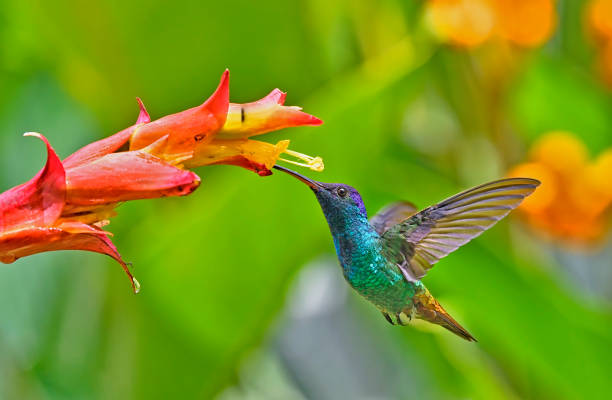
Hummingbirds are nature’s most agile flyers, flapping their wings up to 80 times per second and hovering mid-air with ease. Found across the Americas, they can even fly backward and upside down, feats no other bird can achieve. Their needle-like beaks allow them to sip nectar with precision, fueling their high-energy lifestyles. With iridescent feathers and unmatched aerial skills, hummingbirds are flying jewels. Their remarkable abilities make them some of the most extraordinary creatures to grace the skies.
39. Dung Beetle: The Tireless Recycler
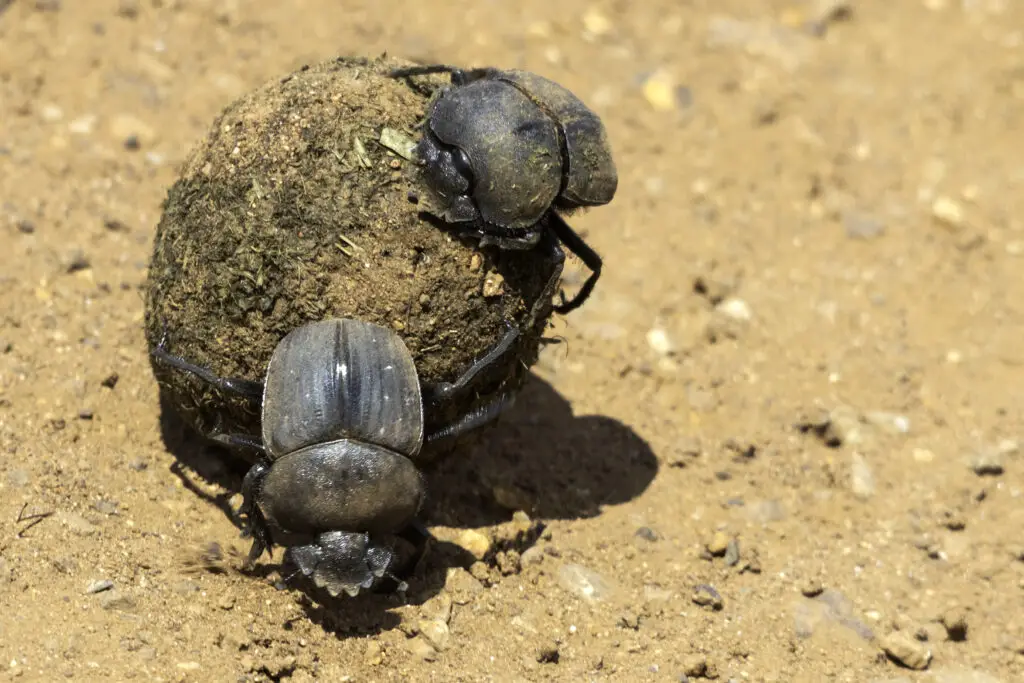
The dung beetle might not have a glamorous job, but it’s one of nature’s strongest creatures. It rolls balls of dung weighing over 1,000 times its body weight, recycling nutrients back into the soil. Found worldwide, this tiny powerhouse plays a vital role in maintaining healthy ecosystems. Its incredible strength and determination make it a symbol of perseverance. The dung beetle proves that even the smallest creatures can have the biggest impact.
40. Painted Lady Butterfly – The Global Glider
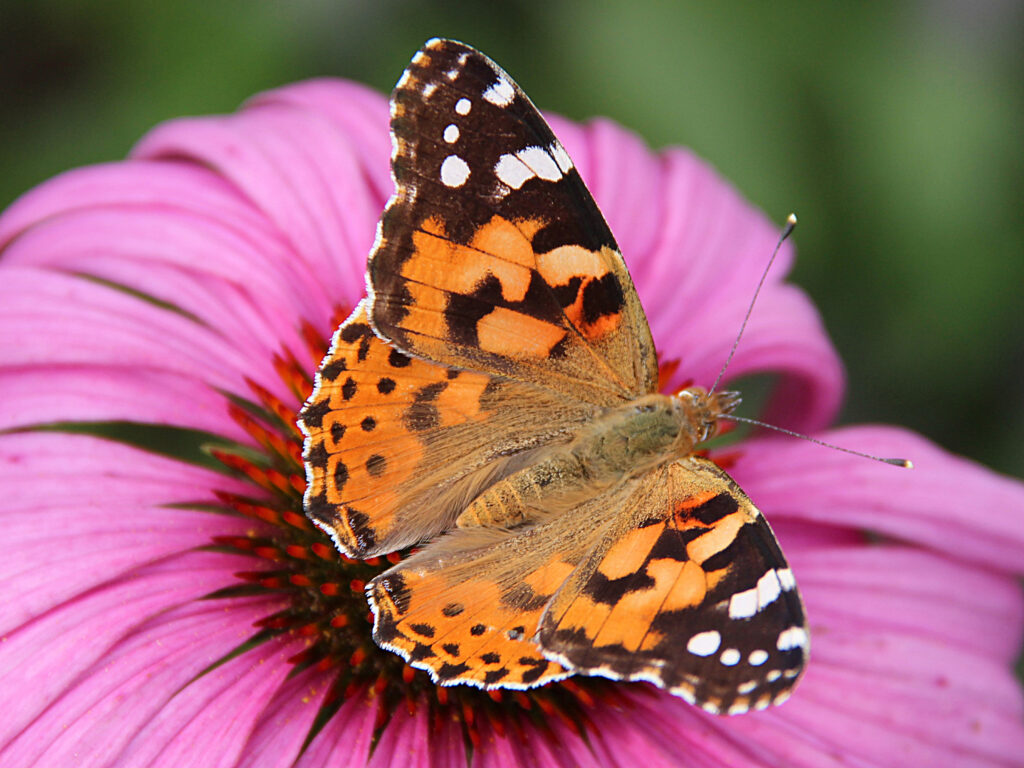
The Painted Lady butterfly embarks on a jaw-dropping 9,000-mile migration from Africa to Europe, crossing deserts, mountains, and seas. These delicate creatures ride high-altitude winds to save energy, their vibrant wings a beacon of resilience. Facing predators and unpredictable weather, they persevere, proving that beauty and endurance can coexist. Each migration is a multigenerational relay, where one generation begins the journey, and another finishes it. The Painted Lady’s epic trek is a reminder that even the smallest travelers can conquer the vastest distances.
41. Great White Shark – The Ocean Nomad
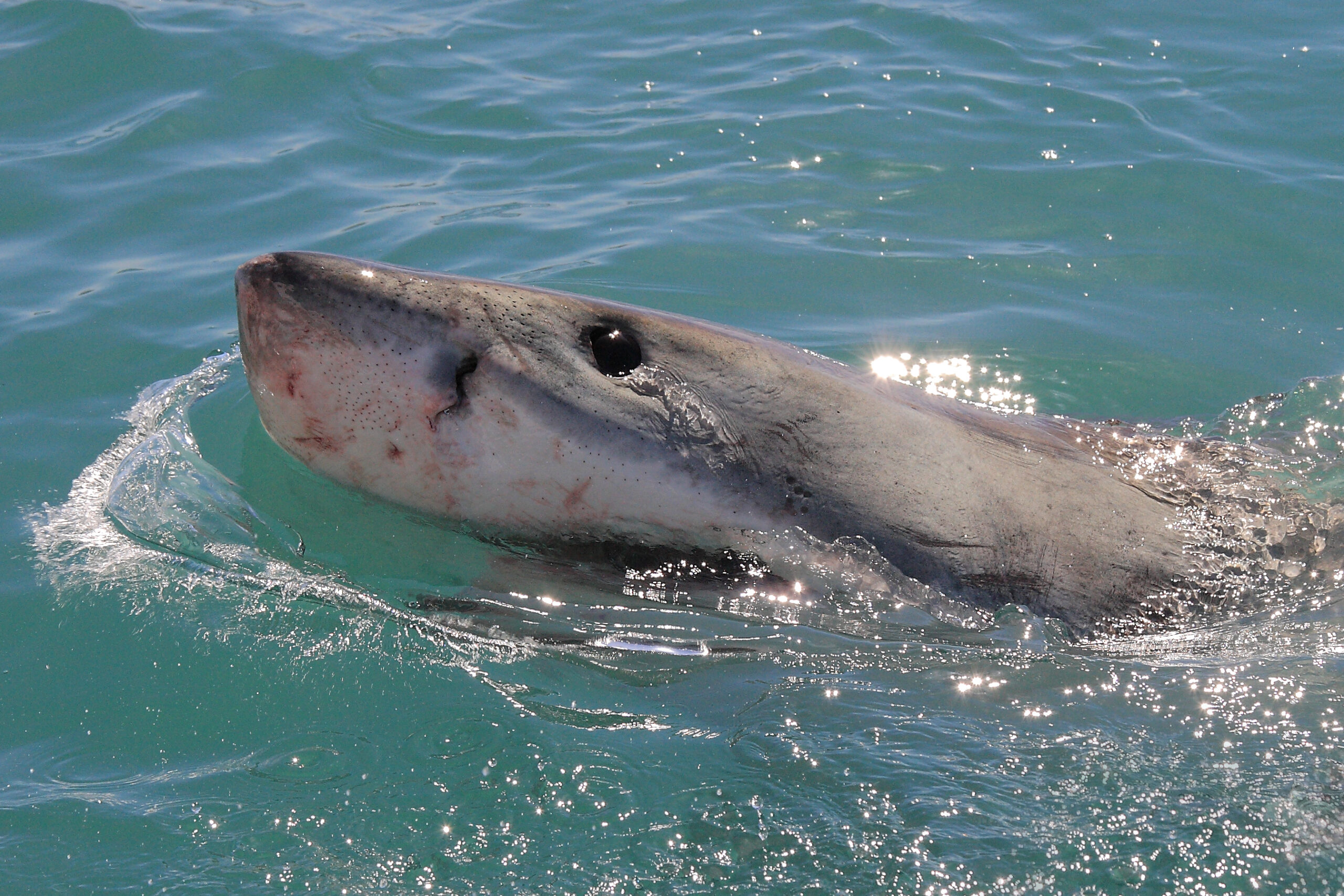
The great white shark is a solitary ocean traveler, covering over 12,000 miles on migrations between feeding and breeding grounds. With an internal GPS attuned to Earth’s magnetic fields, it patrols the seas with unmatched precision. As an apex predator, it dominates the food chain, striking fear into prey with its speed, power, and sharp instincts. Each journey is a solitary odyssey of survival, reminding us why this iconic hunter reigns supreme in the ocean’s depths.
42. Eels (Sargasso Sea) – The Mysterious Travelers

European and American eels undertake one of nature’s greatest mysteries, traveling thousands of miles to spawn in the Sargasso Sea—a journey no one has ever fully witnessed. These slippery travelers navigate rivers, estuaries, and the open ocean, guided by magnetic fields and ocean currents. After spawning, the adults die, leaving their larvae to drift thousands of miles back to their freshwater homes. The eel’s enigmatic life cycle remains one of the natural world’s most perplexing phenomena, blending instinct with the unknown.
43. Dragonfly (Globe Skimmer) – The Long-Distance Flyer
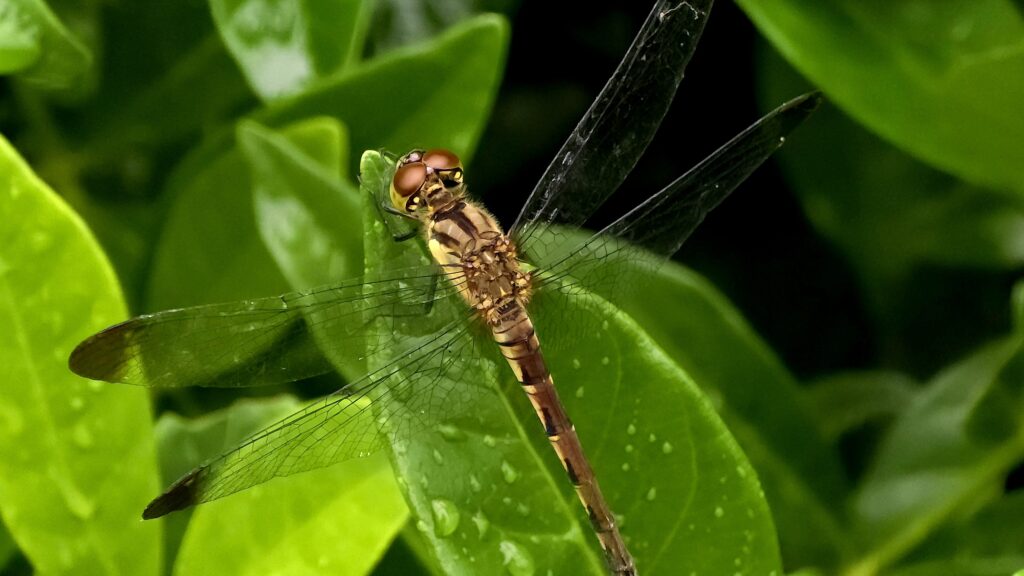
iStock
The Globe Skimmer dragonfly holds the title for the longest insect migration, traveling up to 11,000 miles over oceans. Riding wind currents, this delicate creature defies its size, conserving energy while flying for days without rest. Scientists believe its journey follows monsoon patterns, ensuring water sources for reproduction. With shimmering wings and relentless determination, the Globe Skimmer proves that even the smallest champions can achieve the impossible, turning the skies into their ultimate battleground.
44. The Glass Frog – The Transparent Marvel
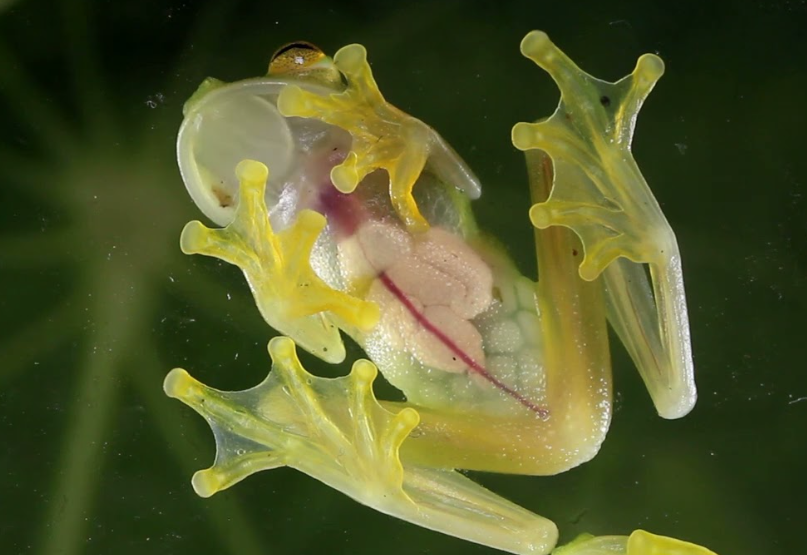
The Glass Frog is a mesmerizing creature with translucent skin that reveals its beating heart and internal organs. Found in Central and South America, these tree-dwelling amphibians are masters of disguise, blending seamlessly with the leaves they inhabit. Males fiercely guard their eggs, fending off rivals and predators with surprising aggression for their size. Their transparency isn’t just a wonder of nature—it’s a survival strategy that makes them nearly invisible to predators. The glass frog proves that sometimes, nature’s greatest defenses lie in the art of subtlety.
45. Salamander (Axolotl) – The Eternal Youth

The Axolotl is a biological enigma, a salamander that never grows up. Native to Mexico, it remains in its juvenile form throughout life, retaining gills and living underwater. This “Peter Pan” of the animal kingdom regenerates entire limbs, spinal cords, and even parts of its heart and brain. Despite its magical traits, the Axolotl faces extinction in the wild. Its story is a testament to the resilience of nature’s miracles and a reminder of what we stand to lose.
46. Golden Poison Dart Frog – The Deadly Jewel
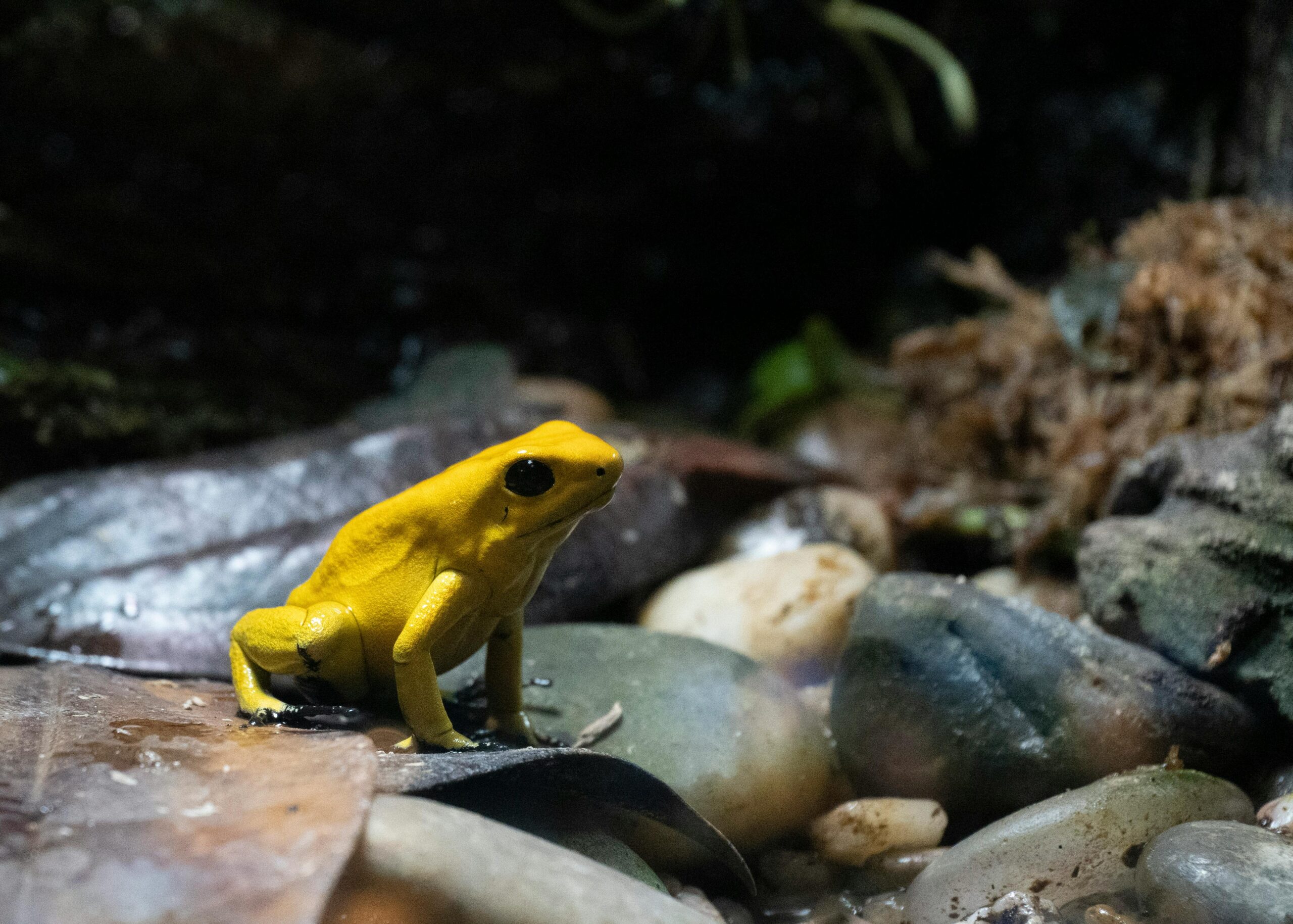
The Golden Poison Dart Frog is a tiny creature with a deadly secret: its skin secretes enough toxin to kill 10 adult humans. Found in Colombia’s rainforests, this vibrant jewel warns predators with its bright yellow coloration—a clear message to stay away. Despite its lethal nature, the frog plays a vital role in its ecosystem, controlling insect populations. Revered by Indigenous tribes who use its toxins for hunting, the Golden Poison Dart Frog is a reminder that beauty can be as deadly as it is mesmerizing.
47. Arctic Wolf – The Silent Stalker

The Arctic wolf roams one of the harshest climates on Earth, thriving in subzero temperatures and endless snow. Built for survival, its thick white coat blends into the tundra, making it a master of stealth. These wolves travel hundreds of miles in search of food, relying on their tight-knit packs to hunt caribou and musk oxen. Their piercing yellow eyes and haunting howls evoke mystery and resilience. In the face of brutal winters, the Arctic wolf endures, proving that strength lies in both unity and adaptability
48. Coconut Crab – The Giant Climber
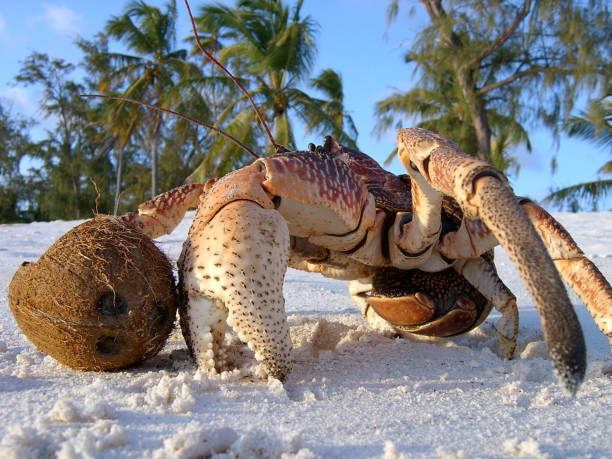
The coconut crab is nature’s armored giant, capable of cracking open coconuts with its powerful claws. Found on tropical islands, this land-based crustacean grows up to three feet wide, making it the largest terrestrial arthropod. Its strength doesn’t stop at crushing coconuts—it can climb trees with ease, often stealing shiny objects along the way, earning its reputation as a thief. Despite its intimidating appearance, the coconut crab plays a vital role in its ecosystem, turning brute force into a tool for survival.
49. Saiga Antelope – The Ancient Wanderer
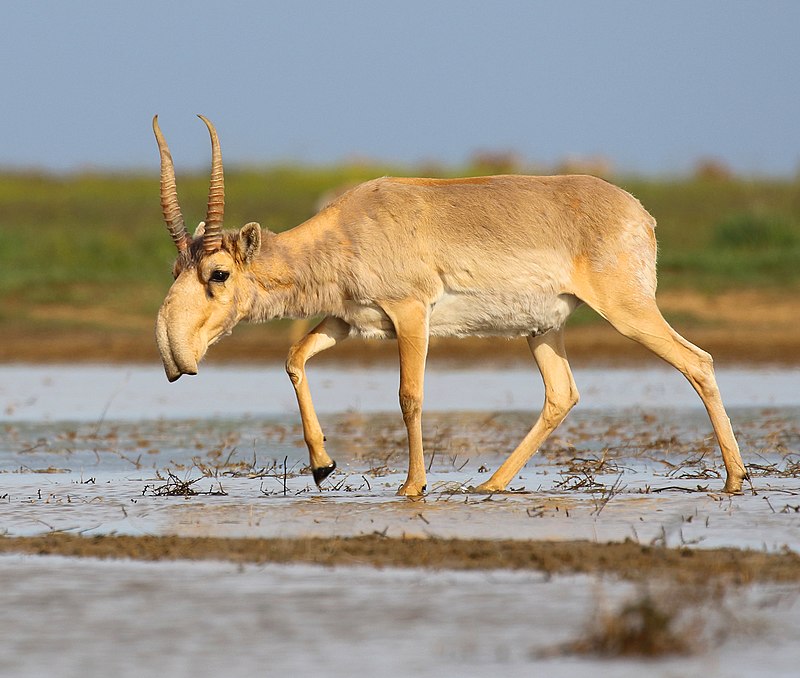
Wikipedia
With its bizarre, bulbous nose and prehistoric appearance, the Saiga antelope looks like it stepped out of a time machine. Found in the grasslands of Central Asia, this critically endangered animal migrates hundreds of miles across harsh terrain, using its nose to filter dust and regulate body temperature. Despite facing poaching and habitat loss, the Saiga continues to endure, a living relic of a bygone era. Its resilience is a testament to nature’s ability to adapt—even when survival seems impossible.
50. Galápagos Tortois – The Living Legacy

The Galápagos tortoise is a slow-moving giant that can live for over 150 years, making it one of the longest-living vertebrates on Earth. These iconic reptiles roam their island homes in search of vegetation, their massive shells acting as both protection and a testament to their ancient lineage. Despite their slow pace, they have outlived predators and changing climates for centuries. The Galápagos tortoise isn’t just a survivor—it’s a symbol of endurance and the timeless beauty of evolution
From record-breaking speed to mind-bending adaptations, these 50 champions of the animal kingdom showcase the power and ingenuity of nature. Their stories remind us of the beauty, resilience, and balance that exist in the wild. But beyond their astonishing abilities, they also highlight the importance of protecting the ecosystems that nurture such wonders. As we marvel at their greatness, we are reminded that these creatures are not just survivors—they are living symbols of a world worth preserving. Their triumphs inspire us to celebrate and protect the planet they call home.


